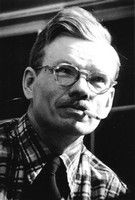
|
|
|
|
New of Art and Artists
Works in Modern Idioms Make Clean Sweep of Prizes At Society of Washington Artists' Annual Contest
The Society of Washington Artists' 60th annual exhibition, which opened Friday in the foyer of the Natural History Building, National Museum, to remain for three weeks, is 'in keeping with the trend of current exhibitions," which was one of the conditions of entry for paintings. Works in modern idioms made a clean sweep of the 11 prizes and honorable mentions.
Eighty-five paintings on view represent considerable variety in modern approaches, and a good range of naturalistic styles. Twenty-two sculptures are largely modern. Isabel Bishop of New York City, noted American painter, who selected the paintings and made the awards in painting, had much the heavier task as she had to examine some 540 entries in this medium. Jacques Lipchitz, internationally famous French sculptor, not living in New York City, chose the sculpture section and made its awards from 61 entries. It seems to me that Miss Bishop did the better job in assembling a well-rounded representative show.
However, it is regrettable that Miss Bishop chose to award the three painting prizes and an honorable mention to four of the society's nine officers and committee members. There is no question of her integrity nor of the merits of the works selected, but there is certainly a question here of taste. Furthermore, one cannot but wonder why the officers did not surrender these prizes, under the circumstances, and ask Miss Bishop to make other selections.
Evening Star Prize.
Mary Ruth Snow's romantic fantasy, "The Sea Remembers," which won The Evening Star prize of $100, is an admirable work, masculine in its strength. It was painted from the artist's memory of Nags Head, N. C. Samuel Bookatz' "Ships Service" (Muth award of $50 and the society's medal) and Mimi Du Bois Bolton's "New Babylon" (Saltz award of $50) are abstractions based on architectural themes, but quite different in design and color scheme.
The painting which fetched honorable mentions are a varied quartet. Omar Carrington's "Tropical Witchery" is a romantic expression of a forest at night. Melvin Buckner's expressionistic "Crucifixion," with its faceless figures in black outline, conveys a sense of confusion and crowding people. Richard Lahey's "Arrangement" and Babette Kasmir's "Winter Forest" are abstractions in different degrees, the latter retaining the impression of the subject, while the former is non-objective.
The sculpture section fails to reflect the range of Washington sculptors' talents. I am unable to see any merit (except for the natural beauty of the wood and its careful finish) in Guy Sheatz' "Prometheus," which received the Jelleff award of $50 and the society's medal for the first prize in sculpture. Claire Fontanini's "Visitation" (anonymous award of $25 and the society's medal for second prize) is a simplified wood sculpture handled with great restraint.
Two honorable mentions in sculpture went to Patricia Coyle's "Peace," which is a serious cartoon in bronze, its symbolism obvious; and to Joseph Dach's "One-man Parade," an abstraction in twisted wire. I liked Shirley Lichtman's abstract "Madonna," Russell Houston's "Deacon" and Rowland Lyon's "Pleistocene Mastodon."
There are many pleasing and well-executed paintings, speaking a language which every one can understand. Among them are still life by Margaret Appich, Harry Eisenberg and Esther Lyne; landscapes by Mignon Atchison, Frances Foote, Eugene Galasso, Lois M. Jones, Theodora Kane, Andrea Zerega, Martin Dietz and Dean Stambaugh; urban scenes by Caroline van H. Bean, Jack Boul, James Bupoli, Roger Rittase, John Chapman Lewis, Mary Orwen and Mary Jane Swaninger; flowers by Jean Gernand, Edith Lehman and Josef Pielage; portraits by Marcella Comes and Kenneth Stubbs and interiors by Alfred McAdams and James Porter.
Design is stressed in Helen Niles' "Black Tray," Jack Perlmutter's "Clothes Lines," Benjamin Abramowitz' "Trouble in a Boat," Margaret Keshishian's "The Sisters" (cornets and ships) and Caroline McMaster's "No. 15" (white on white).
Florence S. Berryman, Washington Sunday Star, Sunday, March 9, 1952, page C-5
|
|
|
|

